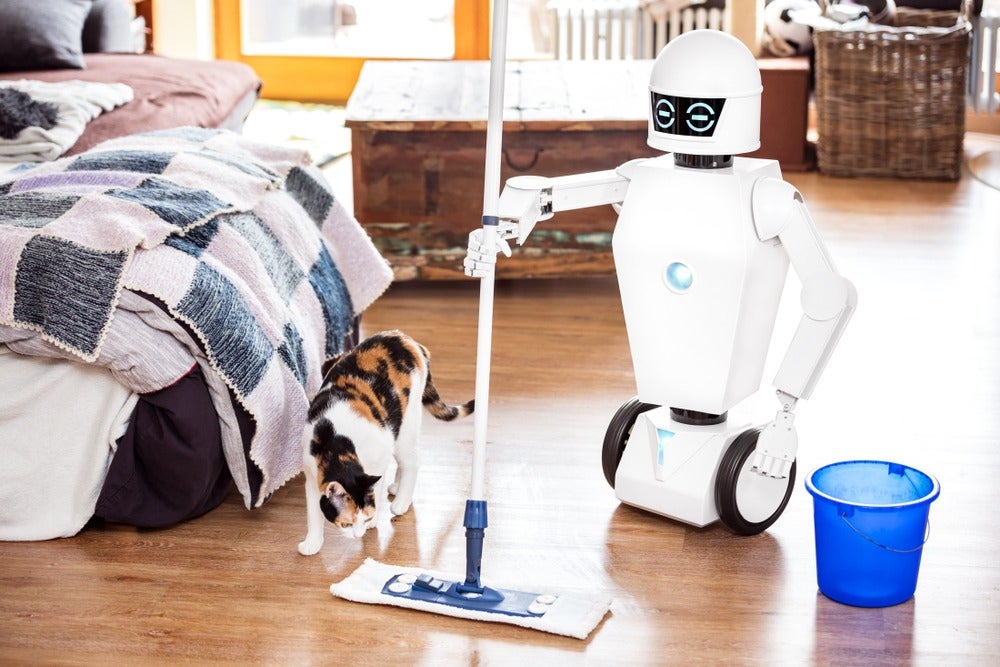With its ageing society and declining workforce, Japan is one country particularly keen to pursue the development of humanoid robotics to help it solve some of the demographic challenges it faces.
Robots are already used widely by a number of industries in Japan, but today companies are seeking opportunities in the home, and while robots that can help out with daily tasks are no longer the stuff of science fiction, issues remain before the humanoid robot is fully embraced.
Domestic robots in Japan
SoftBank Robotics is one of Japan’s leading artificial intelligent developers and its humanoid robot, Pepper, is specialised in human-to-robot communication that already has a prominent place within various Japanese businesses. For example, Pepper can serve customers at a restaurant, addressing table allocation, or it can entertain or educate people at schools or hospices by talking and singing, accompanied by ‘arm movements’.
Building on this, SoftBank Robotics launched ‘Pepper for Home‘, which provides digital assistance functions, similar to Apple‘s Siri or Amazon‘s Alexa. However, one difference is that Pepper can also be used with a variety of educational apps targetted at children of all levels and covering different subjects.
Japanese start-up, Mira Robotics, has also unveiled Ugo, a two-armed bot that can be hired by busy households or be put to work helping elderly people with their domestic needs. A full launch is expected in 2020. According to the company, because the robots are remotely controlled by specially trained operators, they can carry out tasks previously thought to be too difficult, such as doing the laundry and tidying up.
Ugo marks an interesting progression in humanoid robots in the home. However, unlike Pepper that can assume the communication part of service while allowing humans to do other tasks, Ugo cannot work independently and to this extent appears to be missing the point of why robots have appeal. Robots need to be able to act autonomously if they are to share the available workload or, more broadly, address the declining workforce. Automation remains a must-have for consumers of robots.
How well do you really know your competitors?
Access the most comprehensive Company Profiles on the market, powered by GlobalData. Save hours of research. Gain competitive edge.

Thank you!
Your download email will arrive shortly
Not ready to buy yet? Download a free sample
We are confident about the unique quality of our Company Profiles. However, we want you to make the most beneficial decision for your business, so we offer a free sample that you can download by submitting the below form
By GlobalDataPrice is another barrier preventing the wide use of domestic robots. Pepper’s example works in a business context, where companies can see the benefit of adopting Pepper, as it can carry out a function without drawing a salary. However, in a domestic setting, it is difficult for buyers to see the gain after a cost-benefit analysis. Laundroid was a laundry holding closet-style bot, developed by another Japanese start-up, Seven Dreams. The concept of Laundroid was announced in 2015 yet its full launch was delayed and eventually cancelled because its functionality failed to justify its price. Laundroid was expected to be priced around $15,000. Yet, there were several fabric types that Laundroid could not handle properly, undermining its value proposition.
Pepper at Home costs 1.3 million yen ($11,600) for a three-year contract, which represents a significant investment for an average household.
Questions remain about whether consumers can find value for money in a product such as Pepper for Home, with its popularity serving as an indicator for how ready consumers are for bots that can aid them in their household chores.








Related Company Profiles
Amazon.com Inc
Apple Inc